Traditional Italian Anise Biscotti
As an Amazon Associate, I earn from qualifying purchases. Read the full disclosure here.
Basic biscotti cookies flavored with anise extract and anise seed.
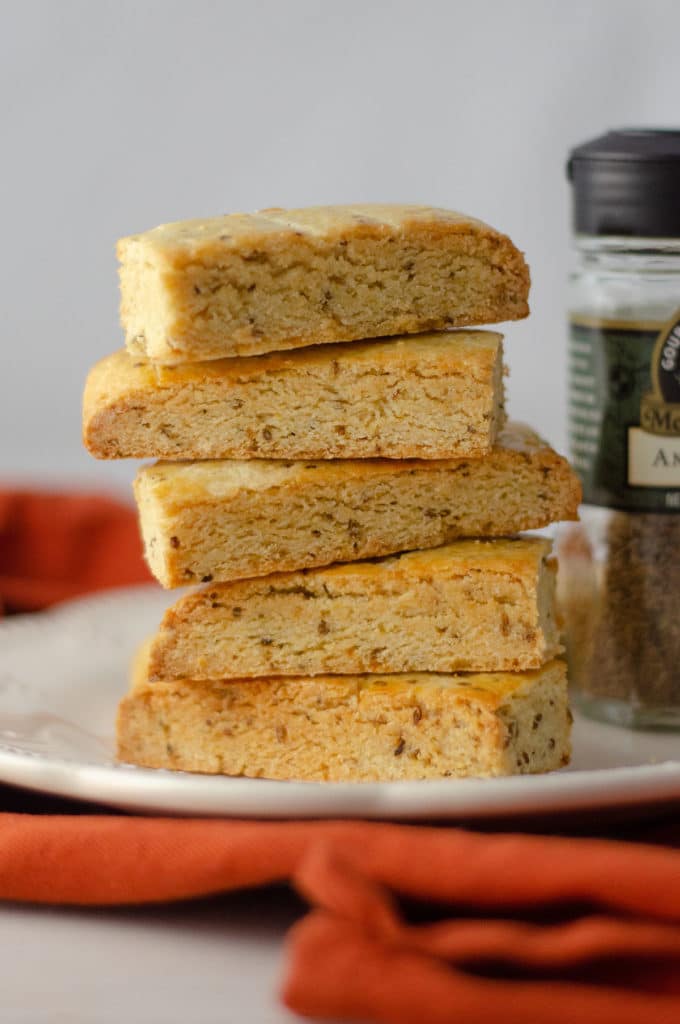
Greetings from THE BEACH!
We are currently sitting pretty in the Outer Banks. We got here Sunday and we are heading back home in 2 days.
It’s been a WONDERFUL week and the kids have done amazingly well, so that has made life even better (seriously, shoutout to both of them for being gems on the 7 hour car ride and sleeping with no trouble in unfamiliar rooms/beds– oh and EXTRA shoutout for the littlest April for absolutely champing through an incisor and a MOLAR while we’ve been here… YIKES).
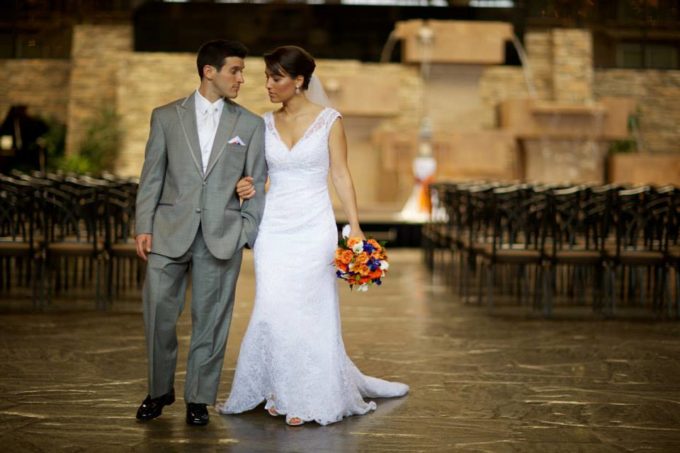
Today is a little extra special because it’s our wedding anniversary. Today marks 6 years for us (we got married on a math problem day– 6 + 7 = 13), and we’re celebrating the best way we know how: with no work and sand between our toes.
I figured what better day to bring this new recipe to you than today because I am a self-proclaimed biscotti enthusiast, but it’s been A YEAR AND A HALF since I last brought you a biscotti recipe (it was this snickerdoodle one), so today’s special occasion is why one is coming out of the woodwork.
Biscotti = love, so it just seems right.

If you’re new/newish here, you may not know about my absolute adoration for biscotti, but you can see my entire biscotti recipe collection here. Biscotti are one of my favorite things to bake because they’re
1) easy to make
2) easy to photograph and
3) easy to DUNK.
And if you don’t dunk a biscotti, did you even really eat it?
I decided to take this one down to the basics. My first ever biscotti recipe was super sprinkle-fied. Of course, nothing wrong with that, but I wanted to experiment with a more traditional recipe to see if my base biscotti recipe held up to the traditional Italian flavor of anise.
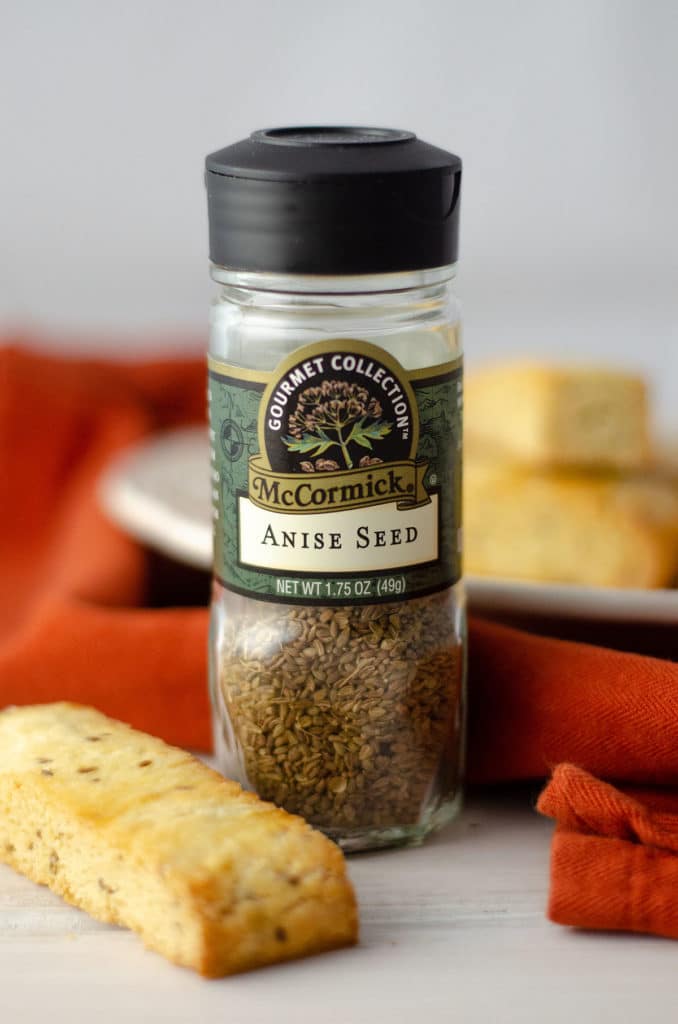
I’m a huge fan of anise (NOT at all a fan of black licorice), and I’ve used it previously in my pride and joy Italian anise bread. That yeast bread features anise extract and anise seed, as do these biscotti. One taste by Matt and my BIL, and they both agreed the biscotti tasted just like pizzelle.
Sounds just right to me!
The anise extract is complemented by vanilla extract, so they’re bursting with all kinds of flavor to bring the perfect cookie to your cup of coffee. Have as a sweet snack or as a light dessert, but definitely DEFINITELY dunk it in milk, coffee, or tea.
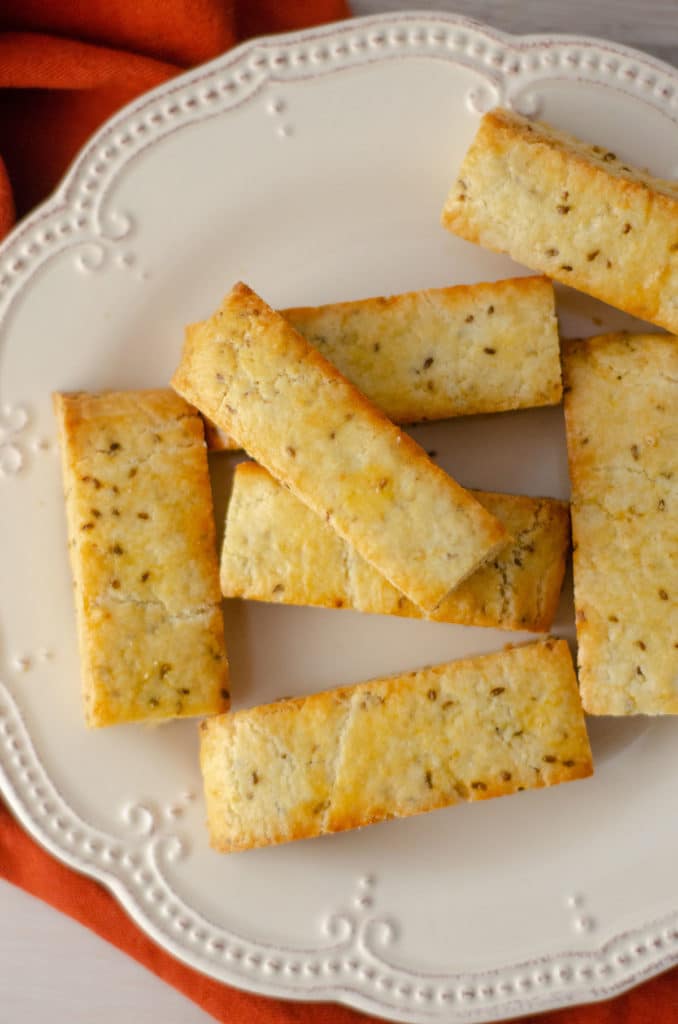
This recipe makes 12 cookies plus some ends (which are certainly still tasty but not big enough to be considered a countable part in my book– they’re absolutely the taste-test pieces!) so if you’re looking to make a bigger batch, you’ll have a bit more hands-on time than usual shaping up your dough slabs.
I’m going to go ahead and say it’s totally worth it though!
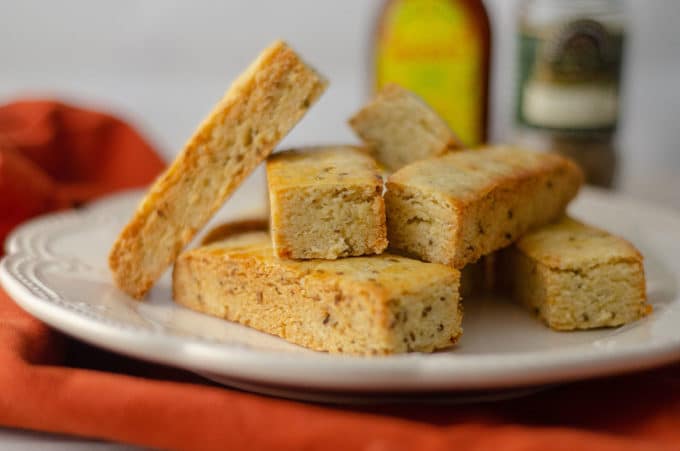
Traditional anise biscotti that I’m sure would make Eva proud… Try it for yourself and maybe let YOUR Nonna have a taste.
Traditional Italian Anise Biscotti
Ingredients
- 1 Tablespoon unsalted butter melted
- 3 Tablespoons vegetable or canola oil
- 1 large egg room temperature
- 1 teaspoon anise extract
- ½ teaspoon vanilla extract
- ½ cup granulated sugar
- 1 and ¾ cup + 1 Tablespoon all-purpose flour be sure to measure properly
- 1 Tablespoon anise seed
- 1 teaspoon baking powder
- ¼ teaspoon salt
- 1 large egg beaten with 1 teaspoon water for egg wash
Instructions
- Preheat the oven to 350ºF degrees. Line a large baking sheet with parchment paper or a silicone baking mat. Lightly flour the baking sheet. Set aside.
- In a medium size bowl, whisk together the butter, oil, egg, extracts, and sugar until combined. Set aside.
- Add the wet ingredients to the dry ingredients and gently mix with a large wooden spoon or sturdy rubber spatula until everything starts to come together. Mixture will be crumbly. This is ok. It will come together in the next step.
- Check out this Instagram reel to see how I make my biscotti. Turn dough out onto lightly floured baking sheet and, with floured hands, pat dough into a rectangle about 1/2" thick. My rectangle was 6" wide and 7 and 1/2" long (using a ruler or a ruled silicone baking mat is helpful here). Brush with egg wash.
- Bake dough slab for 20-22 minutes, or until the top and sides of the slab are lightly browned. Remove from the oven, but do not turn off the heat. Place baking sheet on a wire rack and allow to cool for 10 minutes.
- Once the dough is cool enough to touch, cut into 1" thick slices using a sharp knife. Cut these 1" slices in half, making a perpendicular slice down the entire slab. Set slices cut sides up on the baking sheet.
- Return to the oven to bake for 6 minutes. Remove from oven, turn biscotti over, and bake the other side for 6 minutes. Remove from the oven and allow to cool for 3 minutes on the baking sheet (cookies will become crunchy as they cool). Transfer biscotti to a wire rack to cool completely. Cookies stay fresh covered tightly at room temperature up to 7 days. Cookies freeze well, up to 2 months. Thaw at room temperature.
Nutrition Disclosure
All nutritional values are approximate and provided to the reader as a courtesy. Changing ingredients and/or quantities will alter the estimated nutritional calculations.

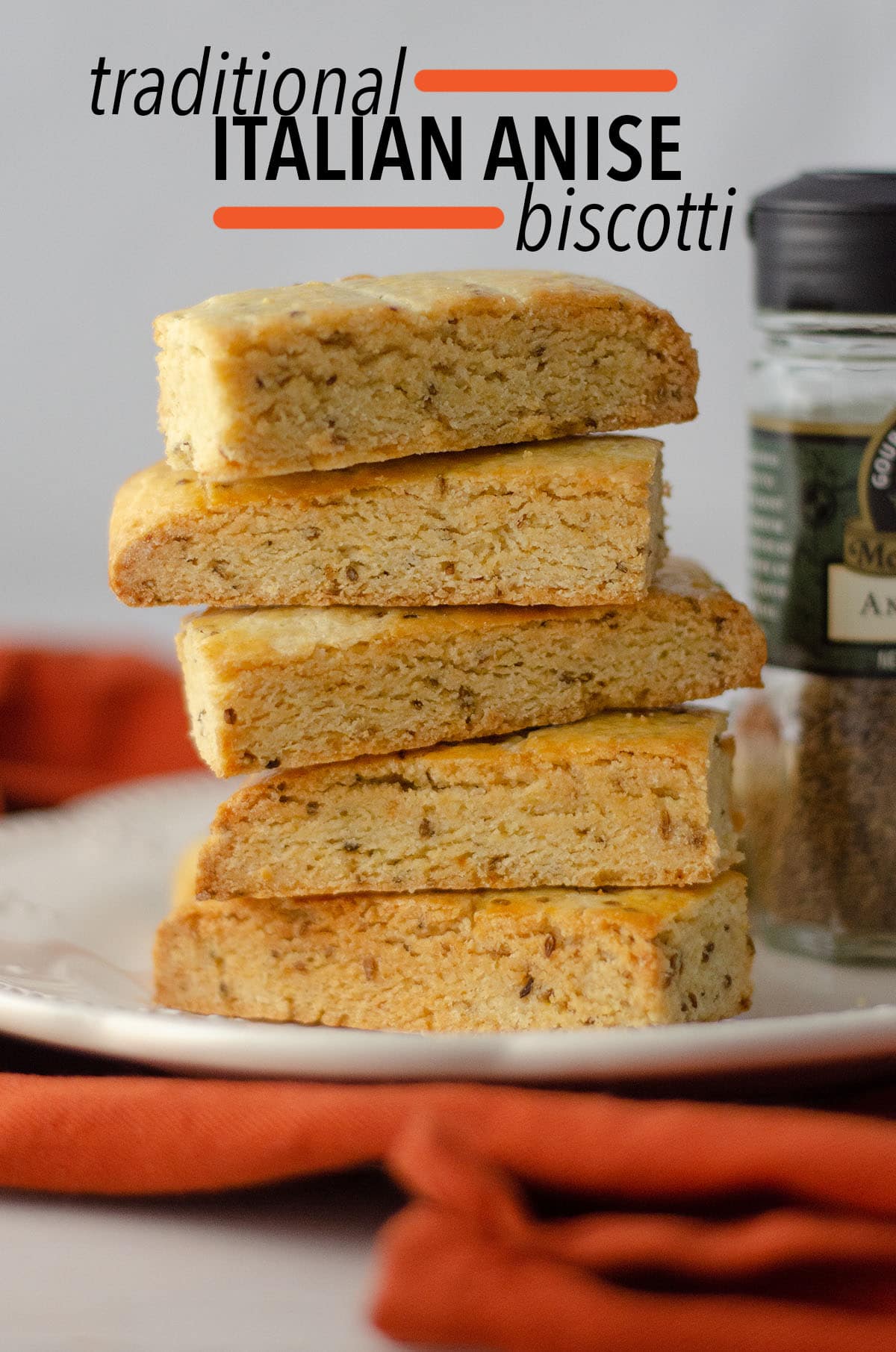
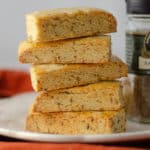
The dough was incredibly dry and hard to manipulate to form a rectangular shape. Dough crumbled and would not stay together. I feel something was missing. After cooked and barely a dozen cookies. Consistency was dry and breadlike ….
Bummer to hear that, Yianna! I have several biscotti recipes on my blog and I make them quite frequently. In fact, I just made a new biscotti recipe to share in a couple weeks and took a video to show how simple it is. I checked the recipe again to be sure, and there are no ingredients left out. I assure you the recipe works and yields 12 cookies (16, actually, if you count the little nubs that you cut off of the edges).
Same here. I added extra wet ingredients.
There are not enough wet ingredients. The result was a crumbly, dry mixture that didn’t resemble dough. I think there is something wrong with this recipe, perhaps a typo somewhere?
I get this comment often enough that I made a reel about biscotti– I use the same base for all of my biscotti, which is a recipe I make more than anything else on my site. You can see the reel here (https://www.instagram.com/reel/CU3Tdb5AEr5/). I promise there is enough moisture!
We made it exactly as the recipe states, and it was like biscuits before adding any liquid. We watched the reel, and it looks nothing like it. There is crumbly and then there is literal crumbs. I think something is missing from the recipe.
Hi, Kylie– there is nothing missing from the recipe. I have 10+ biscotti recipes on my site, and they all have the same base, and I make these biscotti all the time, as they’re my favorite cookie. I explain in the recipe that the dough is crumbly, and it will come together when you press it together into a slab. Some people report the same as you, but most have no issue. I’m unsure how to troubleshoot since I’m not there with you, and I never have issues. Sorry I can’t be more helpful, but if you didn’t try to press the dough together, as I say you need to do in order to bring it all together, then I would say press it together and you’ll find it works just fine.
1 and 3/4 cups + 1 Tablespoon= 241 grams…NOT… 218 grams.
I saw you weighed in grams the flour in one of your other biscotti recipes and so the comments
indicate that the flour in the recipe is being measured incorrectly, thereby resulting in a drier mix.
I believe the error is in…YOUR measurement.
Hi, Mel. I’m very confused. 1 and 3/4 cup + 1 Tablespoon of flour is 218g.
1 cup = 120g
3/4 cup = 90g
1 Tablespoon = 7.5g
So I guess TECHNICALLY it’s 217.5g, but… We round up 🙂
And another reason I’m confused is that with 218g, there’d be less flour than with your 241g (which I actually have no clue from where you’re getting that number) which would make a… Wetter dough.
Lynn…
Many comments are telling you the mixture…is TOO dry (too much flour)
I WEIGHED 1,3\4 cups, plus 1 T and it’s 241 grams not 218.
One of your other recipes uses 218 GRAMS.
I always weigh ingredients because I bake bread and it’s more accurate.
Mel… You MEASURED it inaccurately, then. Please READ… What you are saying. If you WEIGHED 1 and 3/4 cup + 1 Tablespoon and got 241g, that would be MORE FLOUR than the 218g that I say goes into the dough. Which would make it MUCH DRIER.
Please look on your flour label. All purpose flour is 120g per cup.
The MOST accurate way to measure flour is BY WEIGHT. The next is SPOON & LEVEL.
I have NO clue where you are getting 241g from. If you can explain that to me, maybe I can understand a BIT more, but my recipe is CORRECT.